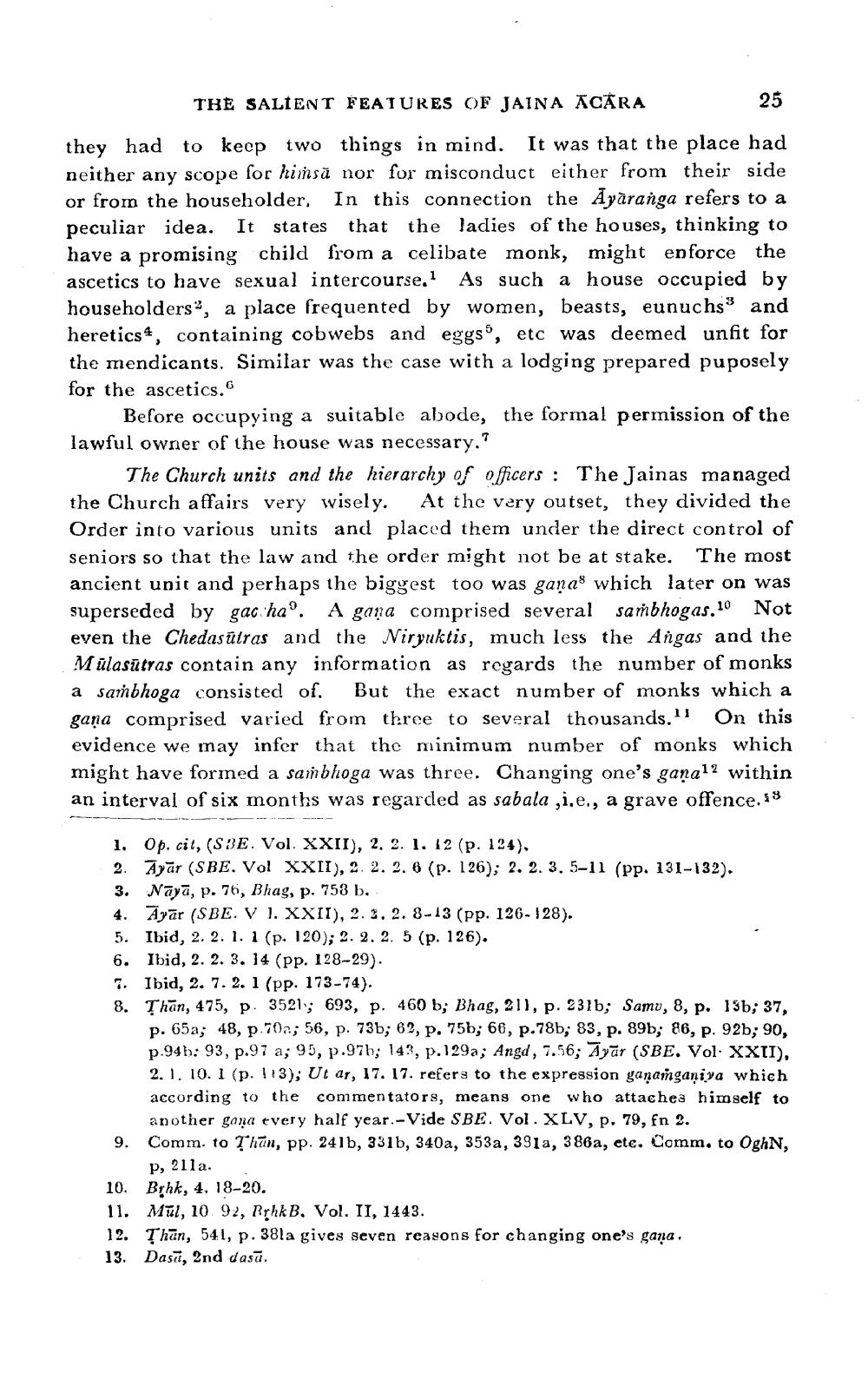________________
THE SALIENT FEATURES OF JAINA CARA
25
they had to keep two things in mind. It was that the place had neither any scope for himsā nor for misconduct either from their side or from the householder. In this connection the Ayaranga refers to a peculiar idea. It states that the ladies of the houses, thinking to have a promising child from a celibate monk, might enforce the ascetics to have sexual intercourse. As such a house occupied by householders", a place frequented by women, beasts, eunuchs3 and heretics, containing cobwebs and eggs, etc was deemed unfit for the mendicants. Similar was the case with a lodging prepared puposely for the ascetics.
Before occupying a suitable abode, the formal permission of the lawful owner of the house was necessary.?
The Church units and the hierarchy of officers : The Jainas managed the Church affairs very wisely. At the very outset, they divided the Order into various units and placed them under the direct control of seniors so that the law and the order might not be at stake. The most ancient unit and perhaps the biggest too was ganas which later on was superseded by gac ha. A gana comprised several sambhogas.10 Not even the Chedasülras and the Niryuktis, much less the Angas and the Mülasūtras contain any information as regards the number of monks a sambhoga consisted of. But the exact number of monks which a gana comprised varied from three to several thousands.") On this evidence we may infer that the minimum number of monks which might have formed a sambhoga was three. Changing one's gana12 within an interval of six months was regarded as sabala ,i.e., a grave offence.18
1. Op. cit, (S3E. Vol. XXII), 2. 2. 1. 12 (p. 124), 2. Ayar (SBE. Vol XXII), 2. 2. 2. 6 (p. 126); 2. 2. 3. 5-11 (pp. 131-132). 3. Nāyā, p. 76, Bhag, p. 758 b. 4. Ayar (SBE. V J. XXII), 2. 3. 2. 8-13 (pp. 126-128). 5. Ibid, 2. 2. 1. 1 (p. 120); 2. 2. 2. 5 (p. 126). 6. Ibid, 2. 2. 3. 14 (pp. 128-29). 7. Ibid, 2. 7. 2. 1 (pp. 173-74). 8. Thān, 475, p. 3521; 693, p. 460 b; Bhag, 21), p. 231b; Samv, 8, p. 13b; 37,
p. 65a; 48, p.702; 56, p. 73b; 62, p. 75b; 66, p.78b; 83, p. 89b; 86, p. 92b; 90, p.94b): 93, p.97 a; 95, p.97b; 143, p.129a; Angd, 7.56; Ayar (SBE. Vol. XXII), 2.1. 10. I (p. 113); Ut dr, 17. 17. refers to the expression gananganiya which according to the commentators, means one who attaches himself to
another gana every half year.-Vide SBE. Vol. XLV, p. 79, fn 2. 9. Comm. to Thun, pp. 241b, 331b, 340a, 353a, 391a, 386a, etc. Comm. to OghN,
P, 211a. 10. Brhk, 4. 18-20. 11. Mül, 10. 92, RthkB. Vol. II, 1443. 12. Than, 541, p. 38la gives seven reasons for changing one's gana. 13. Dasū, 2nd dasā.




